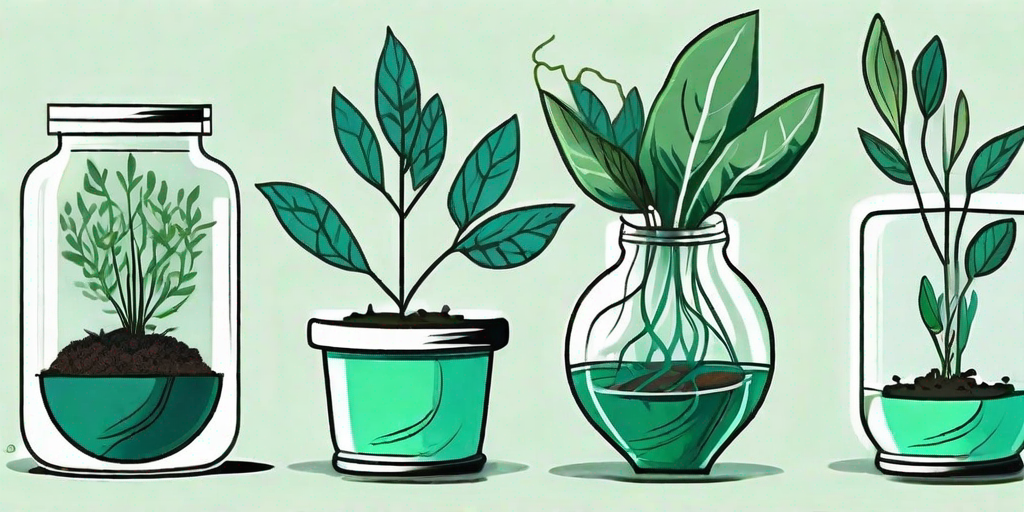
Welcome, dear reader, to the green and glorious world of indoor plants. If you're here, it's probably because you're looking to add a touch of nature to your indoor space. But, oh dear, you're stuck with low light conditions. Fear not! We've got you covered. In this comprehensive guide, we'll explore the best flowering indoor plants that thrive in low light environments. So, sit back, relax, and let's dive into the verdant world of indoor gardening.
The Magic of Indoor Plants
Indoor plants are more than just pretty decorations. They're like the friendly, silent roommates who help clean the air, boost your mood, and even improve your productivity. And the best part? They don't steal your food from the fridge or leave their dirty dishes in the sink.
But not all plants are created equal. Some need a lot of sunlight, while others can survive in the gloomiest corners of your home. The trick is to find the right plant for your specific conditions. And that's where we come in.
Flowering Indoor Plants for Low Light Conditions
Believe it or not, there are plenty of flowering plants that can thrive in low light conditions. They're like the superheroes of the plant world, able to survive and even flourish in the darkest corners of your home. So, let's meet these green heroes, shall we?
Peace Lily (Spathiphyllum)
The Peace Lily is like the Swiss Army knife of indoor plants. It's not only beautiful, with its dark green leaves and elegant white flowers, but it's also one of the best plants for purifying the air. Plus, it's a low light champion, able to survive in shady corners where other plants fear to tread.
Peace Lilies prefer indirect light and moist soil, but they're also forgiving if you forget to water them once in a while. Just don't let them dry out completely, or they'll start to look a bit sad. And nobody wants a sad Peace Lily.
Snake Plant (Sansevieria)
Don't let the name scare you. The Snake Plant is one of the easiest and most resilient indoor plants you can find. It's also one of the few plants that can convert carbon dioxide into oxygen at night, making it a great choice for bedrooms.
Snake Plants can survive in low light conditions, but they also tolerate bright light. They're not picky about watering either. In fact, they prefer to be left alone, so they're perfect for those of us who are a bit forgetful when it comes to plant care.
ZZ Plant (Zamioculcas zamiifolia)
The ZZ Plant is like the introvert of the plant world. It doesn't need much attention, and it's perfectly happy in low light conditions. It's also incredibly resilient, able to survive neglect and even drought.
ZZ Plants have glossy, dark green leaves that can add a touch of elegance to any room. They're slow growers, but with a bit of patience, they can reach impressive sizes. Just remember not to overwater them, as they're prone to root rot.
How to Care for Your Low Light Indoor Plants
Now that we've introduced you to some of the best flowering indoor plants for low light conditions, let's talk about how to keep them happy and healthy. After all, a healthy plant is a happy plant, and a happy plant makes for a happy home.
Watering
When it comes to watering, less is often more. Most indoor plants prefer to dry out a bit between waterings, so it's better to underwater than to overwater. A good rule of thumb is to stick your finger into the soil. If it's dry up to your first knuckle, it's time to water.
Remember, different plants have different watering needs. Peace Lilies, for example, prefer moist soil, while Snake Plants and ZZ Plants are more drought-tolerant. So, make sure to do your homework and learn about your plant's specific needs.
Feeding
Just like us, plants need food to grow. But instead of pizza and ice cream, they prefer a balanced diet of nutrients. Most indoor plants will benefit from a regular feeding with a balanced, water-soluble fertilizer.
However, don't overdo it. Too much fertilizer can harm your plants. A good rule of thumb is to feed your plants once a month during the growing season (spring and summer) and less often during the dormant season (fall and winter).
FAQs
What is a low light environment?
A low light environment is an area that doesn't receive direct sunlight or only gets indirect light for a few hours a day. This could be a room with north-facing windows, a room with no windows, or a spot that's far from a window.
Can all plants survive in low light?
No, not all plants can survive in low light. Some plants need a lot of sunlight to photosynthesize and grow. However, there are many plants, like the ones we've discussed in this guide, that can thrive in low light conditions.
How often should I water my indoor plants?
The frequency of watering depends on the type of plant and the conditions in your home. As a general rule, most indoor plants prefer to dry out a bit between waterings. So, it's better to underwater than to overwater.
Conclusion
There you have it, dear reader. A comprehensive guide to the best flowering indoor plants for low light environments. With the right plants and a bit of care, you can transform your home into a green oasis, even if you're stuck with low light conditions. So, go ahead, embrace your inner green thumb, and bring some life into your home.















